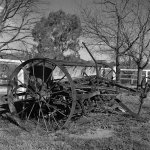ChrisN
Striving
In Keith's thread about Neopan 400 (here), there are some lovely images posted as example of results with Neopan and various developers. One thing that has struck me there, and with a couple of recent rolls shot with HP5+ in a MF camera, is that the tonality achieved with MF seems to be better than the same film used in 35mm. There just seems to be a richer range of mid-tones especially recorded in the MF compared with the 35mm results. Am I imagining this?


